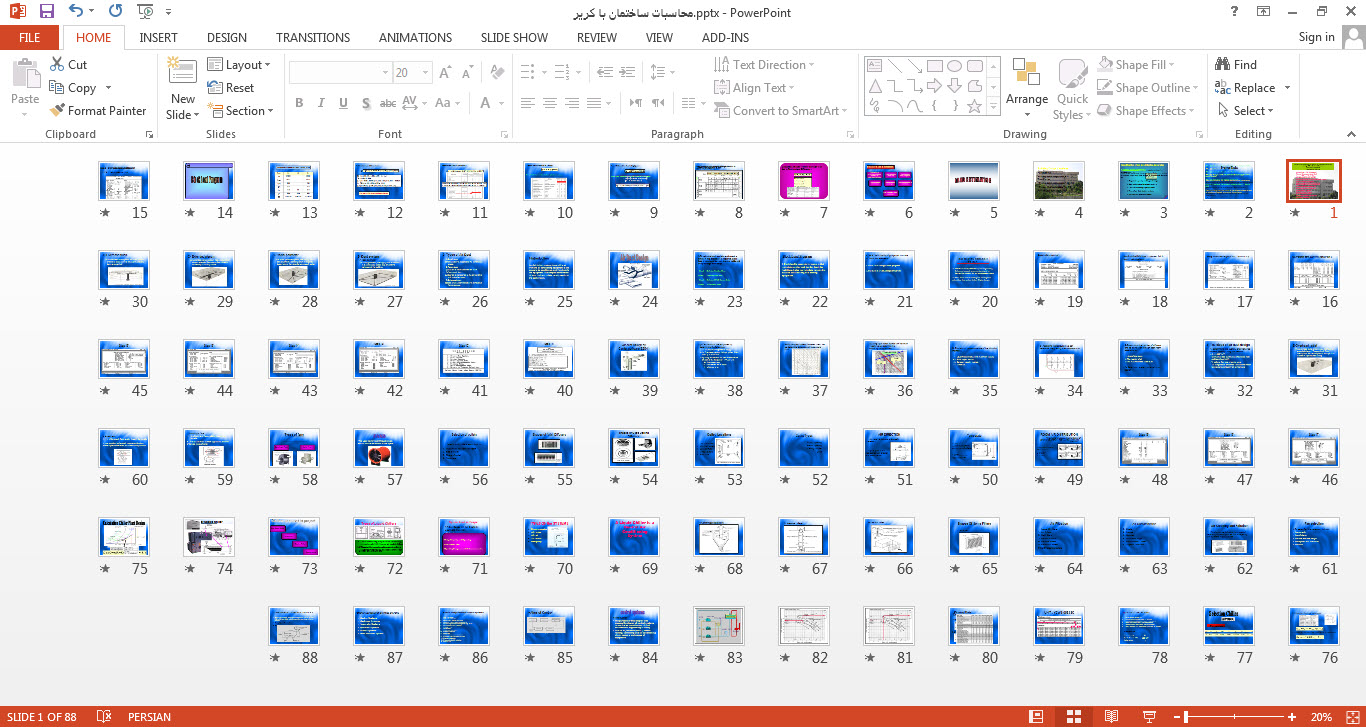لینک دانلود و خرید پایین توضیحات
فرمت فایل word و قابل ویرایش و پرینت
تعداد صفحات: 10
Successful Fireplaces in Tight Houses
A central location, a tall chimney, and controlled combustion are the keys to a good burn.
By John GullandA version of this article first appeared in the May 1999 edition of the Journal of Light Construction
Builders are beginning to hear more complaints that traditional masonry fireplaces leak smoke and burn too much wood for too little heat output. The fact is, open site-built masonry fireplaces have always been filthy, smoky, and inefficient, but these drawbacks were less noticeable in drafty, uninsulated houses. Today’s tighter homes, however, are less forgiving, and their occupants are less tolerant.
In addition, many modern fireplaces are used strictly as a design element, and many designers have no training in what makes one work. On top of that, many of the masons and other heating contractors who build fireplaces carry over outdated design traditions that are at the root of performance problems.It doesn’t have to be that way. Building scientists now understand why traditional fireplace designs perform poorly, and masons, manufacturers, and hearth installers have responded with new products and techniques that eliminate past problems.In this article, I’ll discuss the common causes of fireplace problems, and propose solutions for masonry fireplaces and heaters, as well as less expensive, efficient factory-built wood-burning fireplaces.
Why Fireplaces FailWhen it comes to traditional open masonry fireplaces, masons have perpetuated outdated ideas about the smoke shelf, the mysteries of the smoke chamber, and the need for wide, but shallow-throat dampers.Today, it is clear that all three of these features work against successful fireplace performance (see Figure 1).
The smoke shelf and shallow-throat damper both act as obstacles to straight exhaust flow. And the smoke chamber actually reduces the strength of a chimney’s draft by slowing and cooling the fireplace exhaust. The performance of many brick fireplaces can be improved immediately by removing the throat damper and smoke shelf, and installing a chain-operated damper at the top of the chimney. The results are a smooth, straight path for the exhaust and less smoking when a fire burns.
Figure 1. Traditional fireplaces leak smoke into living space and don’t produce heat efficiently. The curving smoke chamber, the throat damper and the smoke shelf all decrease the strength and stability of the chimney draft.
Cold Hearth SyndromeBut the biggest source of trouble is the location of the fireplace. Over the past 50 years of residential design, fireplaces have migrated from the center of the house to a position against the exterior walls, or even into chases that are completely outside the house. This causes the cold hearth syndrome, which is the source of most fireplace failures.The most dramatic effect of a cold hearth is a predictable blast of cold air when the fireplace doors are opened to build a fire. Smoke fills the room when someone tries to light a kindling fire. This is a common, even chronic, characteristic of North American fireplaces.The syndrome usually has its origin in the decision to place a fireplace outside an exterior wall in a frame or brick chase (Figure 2).
The cold outside air sucks warmth from the fireplace and chimney structure, causing the temperature of the air in the flue to drop. When the flue temperature is lower than the house temperature, air begins to flow down the chimney and onto the hearth. This is called a "cold backdraft" and contrary to common belief, it does not happen because cold air is heavy and falls down the chimney. The air is not falling — it is being sucked down by the house.
Figure 2. Chimneys built on an outside wall, whether exposed or boxed with a chase, are prone to backdrafting (top). One solution is to move the chase inside and to vent it to the interior so warm air can circulate (middle). The best solution is to locate the system properly in the first place. The ideal location is in the center of the house (bottom), because the surrounding air will keep the chimney warm and the chimney will penetrate the roof at its highest point.
Just as hot exhaust in a chimney produces a pressure difference called a draft, so the relatively warm air in a house produces a pressure difference called "stack effect" when it is cold outside The buoyant warm air rises, producing a slight low pressure zone downstairs and higher pressure upstairs. Since most fireplaces are installed on lower floors, they experience negative pressure due to stack effect when it is cold outside. As soon as the air in the chimney falls below room temperature, the house becomes a better chimney than the chimney itself, and a cold backdraft gets started. The backdraft tends to stabilize because as the chimney becomes full of cold air, it cannot produce any draft to resist the suction of the

تحقیق درمورد تهویه ساختمان




